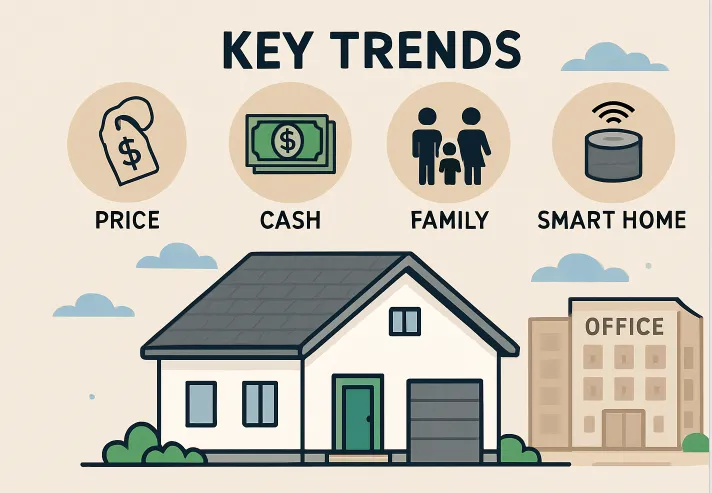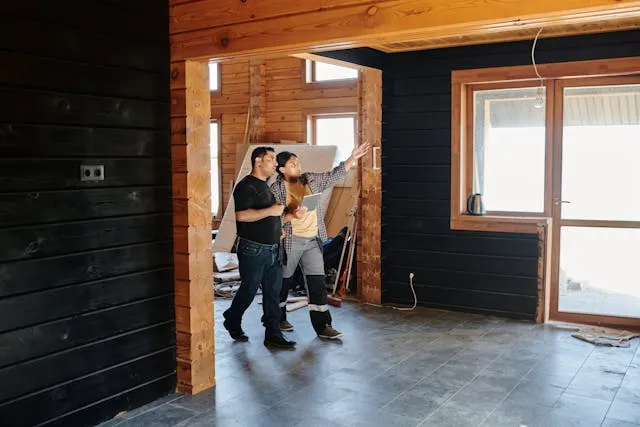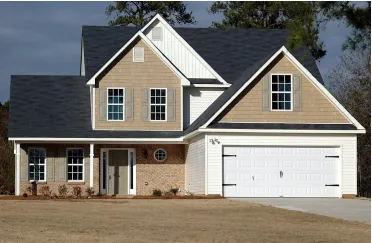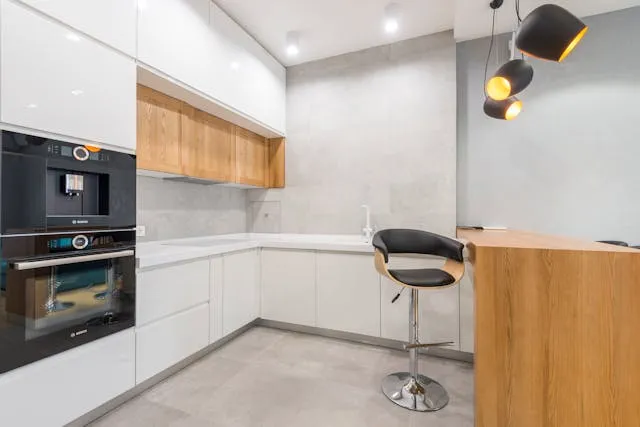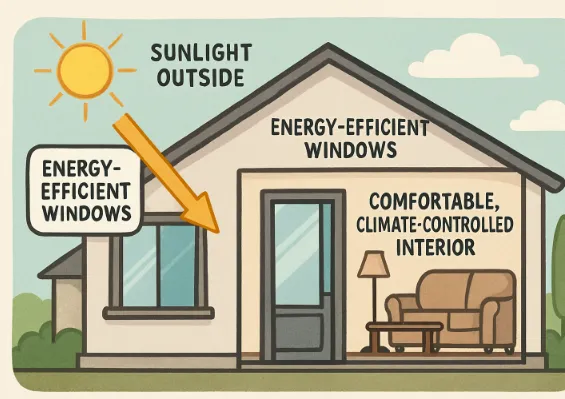Home Buying Trends Today: What Buyers and Sellers Need to Know
With the housing market transforming rapidly, being equipped with current trends is more important than ever for making successful real estate decisions. Economic shifts, changing lifestyles, and technological breakthroughs are all reshaping how people buy and sell homes. Understanding the latest changes is essential to purchase your first property, upgrade to meet household needs, or prepare your home for sale. For those navigating the evolving market in southwestern Pennsylvania, the Upper St. Clair real estate experts Coulter & Castillo Group can provide local insights and guidance rooted in years of experience.
Nationally, home buyers and sellers today are responding to new realities: home prices are at record highs, the prevalence of cash transactions is climbing, and multigenerational families are becoming a significant demographic in the market. Meanwhile, features powered by innovative technology and creative conversions of commercial spaces set new standards for what buyers want and what sellers should consider to boost their property’s appeal. Staying in tune with these movements can help you secure a competitive advantage, regardless of your position in the real estate process.
Also Read: Real Cost of Metal Roofing: Hidden Savings That Homeowners Overlook
Economic pressures have also contributed to a more cautious, research-driven approach among buyers. As affordability tightens, consumers seek neighborhoods that blend value with quality of life, emphasizing school districts, amenities, and walkability as key differentiators in their home search. On the other hand, sellers need to adapt to shifting buyer priorities by presenting their homes as technologically advanced and conducive to modern lifestyles.
Understanding these trends improves your chances of finding the right fit and empowers you to negotiate with confidence and clarity. As the landscape changes, real-time data and expert advice are critical assets for buyers and sellers alike.
Rising Home Prices
Price appreciation remains one of the defining features of the real estate landscape. According to the National Association of Realtors, the national median home price has climbed almost 5% since last year, settling at $410,100 in the fourth quarter. Several factors are driving this spike: persistent inventory shortages, continued demand from local and relocating buyers, and construction that hasn’t kept pace with population growth. As a result, home seekers face fierce competition in many markets, while sellers often field multiple offers for well-presented properties.
Increase in Cash Purchases
Rising mortgage rates and unpredictable lending environments have led to a significant increase in all-cash purchases today. Data shows that 26% of all residential sales this year have been completed without financing, giving these buyers a stronger negotiating hand and often allowing them to close faster. For sellers, a higher percentage of cash buyers can mean fewer deal contingencies and reduced risk that financing issues will delay or derail a transaction. This shift is widespread in markets with high investor activity or among downsizing retirees leveraging equity from previous home sales.
Multigenerational Living
Multigenerational living is becoming a central characteristic of the American housing market, reflecting broader societal and economic shifts. Today, roughly 17% of all homes purchased were for multigenerational use, up from pre-pandemic levels. These arrangements often arise from financial necessity, such as mortgage sharing and living costs. Still, they are also driven by caregiving needs for elderly relatives and a desire to support adult children or grandchildren. As a result, demand is rising for homes with flexible floor plans, private suites, and separate living areas—features that allow privacy and independence while maintaining family connectedness. The New York Times has highlighted how this trend influences new construction and remodeling strategies nationwide.
Smart Home Technology
Today’s buyers are more tech-savvy than ever and expect homes to be equipped with modern, integrated, innovative technology. From high-efficiency heating and cooling systems to security cameras, lighting, and voice-activated devices, these features reshape potential homeowners’ views of “move-in ready.” Agents report that energy efficiency ratings, app-controlled appliances, and built-in security features can add significant value and boost a home’s desirability. For buyers, these enhancements promise comfort and long-term savings—factors increasingly influential in purchasing decisions. According to Forbes, smart tech installations have surged, and homes with such upgrades often command a premium on the market.
Adaptive Reuse of Commercial Spaces
As urban centers grapple with limited housing stock, developers are turning to adaptive reuse projects as an innovative solution to the affordability and supply crisis. This trend involves converting former factories, office buildings, and other obsolete commercial spaces into modern residential housing. Cities like Detroit and Pittsburgh are at the forefront, with projects that boost inventory, revitalize neglected neighborhoods, and breathe new life into urban districts. These properties offer unique architectural features and prime locations for buyers, while municipalities benefit from increased tax revenue and renewed investment.
Conclusion
The home-buying landscape today is being shaped by powerful forces: rising prices, competitive bidding fueled by cash transactions, a surge in multigenerational households, greater demand for smart-home features, and the innovative transformation of city spaces into vibrant residential communities. For success in today’s market, buyers and sellers must stay informed, flexible, and open to shifts reshaping how—and where—people choose to live.

